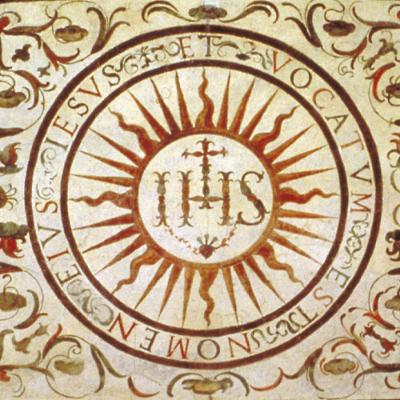The Jesuits
The Society of Jesus

The Society of Jesus is a Catholic religious order of men founded in 1540 by Ignatius of Loyola and a small group of his multinational "friends in the Lord," fellow students from the University of Paris. They saw their mission as one of being available to go anywhere and do anything to "help souls," especially where the need was greatest (e.g., where a certain people or a certain kind of work were neglected).
The "S.J." appearing after the name of vowed Jesuits stands for "Society of Jesus," the formal name of the order. The term "Jesuit" was initially used as a pejorative term in the order's early years, but was soon adopted as a positive one by members and friends of the Society.
Today numbering just under 16,000 priests, brothers and scholastics, Jesuits are spread out in almost every country of the world. The largest group is from India, where Christians are a tiny and sometimes persecuted minority. India has more than one quarter of the whole membership and about one third of the Society's novices and scholastics (those in early formation, the first ten to twelve years). The U.S. has 16% of all Jesuits and Latin America 14%.
Jesuits take the three traditional vows of a religious order: poverty, chastity, and obedience. Unlike other orders, however, they also make a fourth vow:
...a vow of obedience specifically in regard to worldwide mission. In other words, Jesuits must be ready to accept whatever mission the Pope requires, a vow that is reflective of our broader dedication to the universal Church, and to the greater good of all people from all faiths and cultures.
Our collaboration with the laity flows from our personal relationships with Christ. We see ourselves as companions of Jesus, and we invite others to join with us, as friends in the Lord. Together we build up the body of Christ.
With our friends and partners, we also reach out to a broadly diverse world because that’s where God is. From experience and reflection, we know that meaning, value, and divine purpose can be discovered "in all things."

Throughout their history, Jesuits have been pastors, teachers, and chaplains, as well as doctors, lawyers, diplomats, and scientists. With the election of Pope Francis in 2013, they even have their first pope!
Today, Jesuits draw on the rich heritage of Ignatian spirituality and pedagogy in their work administering schools, parishes, retreat centers, campus ministries, and other apostolates. The Society of Jesus is also particularly well-known for its focus on the promotion of justice across its ministries.
Internationally, perhaps the best-known social justice outreach of the Society of Jesus is the Jesuit Refugee Service (JRS). JRS works in more than 50 countries to meet the urgent needs of those who have been forcibly displaced. In the United States, JRS/USA ministers to the spiritual needs of detained immigrants and refugees.
One outgrowth of this effort is the Kino Border Initiative (KBI), a binational ministry. KBI offers direct humanitarian assistance and shelter to recently deported migrants in Nogales, Mexico, while providing education, outreach, and advocacy through its work in Nogales, Arizona.
The Jesuit "charism" or spiritual orientation has also inspired an emerging family of Ignatian justice organizations such as the Ignatian Solidarity Network. This network coordinates justice-related outreach and advocacy efforts among Jesuit schools, parishes, and other institutions.
To learn more about the Jesuits, explore the links below or the additional resources on this site.
Further reading:
- A Pictorial History of the Jesuits from Fr. Joseph MacDonnell, S.J., of Fairfield University
- The General Curia, the Jesuit worldwide headquarters
- The Society of Jesus in the United States
- Jesuits West, local province of the Society of Jesus
- LMU Jesuit Community
- America - The Jesuit Review, "For thinking Catholics and those who want to know what Catholics are thinking"